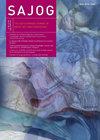建议的妊娠糖尿病胎儿风险评分系统有助于优化分娩时机
IF 0.4
Q4 OBSTETRICS & GYNECOLOGY
South African Journal of Obstetrics and Gynaecology
Pub Date : 2021-02-25
DOI:10.21203/RS.3.RS-271807/V1
引用次数: 0
摘要
背景:妊娠期糖尿病有三个主要因素:巨大儿、代谢率升高和血管横截面大。糖尿病妊娠的一个关键发现是,在没有低氧血症的情况下,胎儿可能会出现严重的酸血症和高乳血症。代谢率的增加导致氧化代谢的显著增加,但由于丙酮酸脱氢酶活性低,增加了酸中毒的风险,胎儿的氧化代谢能力降低。这种病理生理学没有被围绕胎盘功能不全的标准监测模型所认识到,事实上,胎盘功能不全不是妊娠期糖尿病妊娠的问题。基于我们之前的研究,已经开发了一个拟议的风险评分系统,根据胎儿结局对妊娠期糖尿病患者进行风险分类。方法:将四项病例对照研究中的糖尿病病例合并为159例病例,以验证风险评分系统。单变量逻辑回归用于评估个体风险因素对不良妊娠结局的影响。通过计算ROC曲线下的面积来评估总分的诊断准确性。结果:确定了四个潜在的参数来对妊娠期糖尿病妊娠中的胎儿进行风险分类,即心肌功能指数(MPI)、E/a比(舒张功能障碍的标志物)、胎儿体重增加(巨大儿)和羊水指数增加(AFI)。通过对参数的综合得分求和获得的总分范围从0到11。总分是不良结果的一个很好的预测指标,曲线下的ROC面积为0.94。评分上的6分点对不良结果的检测具有84.2%的敏感性和90.2%的特异性。结论:据我们所知,这是第一个提出用于预测不良结果的妊娠期糖尿病评分系统。本文章由计算机程序翻译,如有差异,请以英文原文为准。
A Proposed Fetal Risk Scoring System for Gestational Diabetes to assist in optimizing Timing of Delivery
Background: Gestational diabetes is characterized by three main factors: macrosomia, increased metabolic rate and large vascular cross sections. A critical and crucial finding in diabetic pregnancies is that significant acidaemia and hyperlacticemia can occur in fetuses in the absence of hypoxaemia. The increased metabolic rate results in significant increases in oxidative metabolism but this capacity is reduced in fetuses due to low pyruvate dehydrogenase activity increasing the risk for acidosis. This pathophysiology is not recognized by standard monitoring models which revolves around placental insufficiency which is in fact not the problem in a gestational diabetic pregnancy. A proposed risk scoring system has been developed based on our previous studies to risk categorise gestational diabetics in terms of fetal outcome.Methods: The diabetic cases from four case-control studies were combined to form a total sample of 159 cases for validation of the risk scoring system. Univariate logistic regression was used to assess the effect of individual risk factors with proposed cutoffs on adverse pregnancy outcome. The diagnostic accuracy of the total summative score, was assessed by computing the area under the ROC curve.Results: Four potential parameters were identified to risk- categorise fetuses in a gestational diabetic pregnancy ie the myocardial performance index (MPI), E/A ratio (marker of diastolic dysfunction), increasing fetal weight (macrosomia) and increased amniotic fluid index (AFI). The total score, obtained by summation of the composite scores for parameters ranged from 0 to 11. The total score performed as an excellent predictor of adverse outcome, evidenced by the ROC area under the curve of 0.94. A cutpoint of 6 on the score confers a sensitivity of 84.2% and specificity of 90.2% for detection of adverse outcome. Conclusion: To our knowledge this is the first Gestational Diabetic Scoring system proposed to predict an adverse outcome.
求助全文
通过发布文献求助,成功后即可免费获取论文全文。
去求助
来源期刊

South African Journal of Obstetrics and Gynaecology
Medicine-Obstetrics and Gynecology
CiteScore
0.40
自引率
0.00%
发文量
5
审稿时长
15 weeks
期刊介绍:
The SAJOG is a tri-annual, general specialist obstetrics and gynaecology journal that publishes original, peer-reviewed work in all areas of obstetrics and gynaecology, including contraception, urogynaecology, fertility, oncology and clinical practice. The journal carries original research articles, editorials, clinical practice, personal opinion, South Africa health-related news, obituaries and general correspondence.
 求助内容:
求助内容: 应助结果提醒方式:
应助结果提醒方式:


